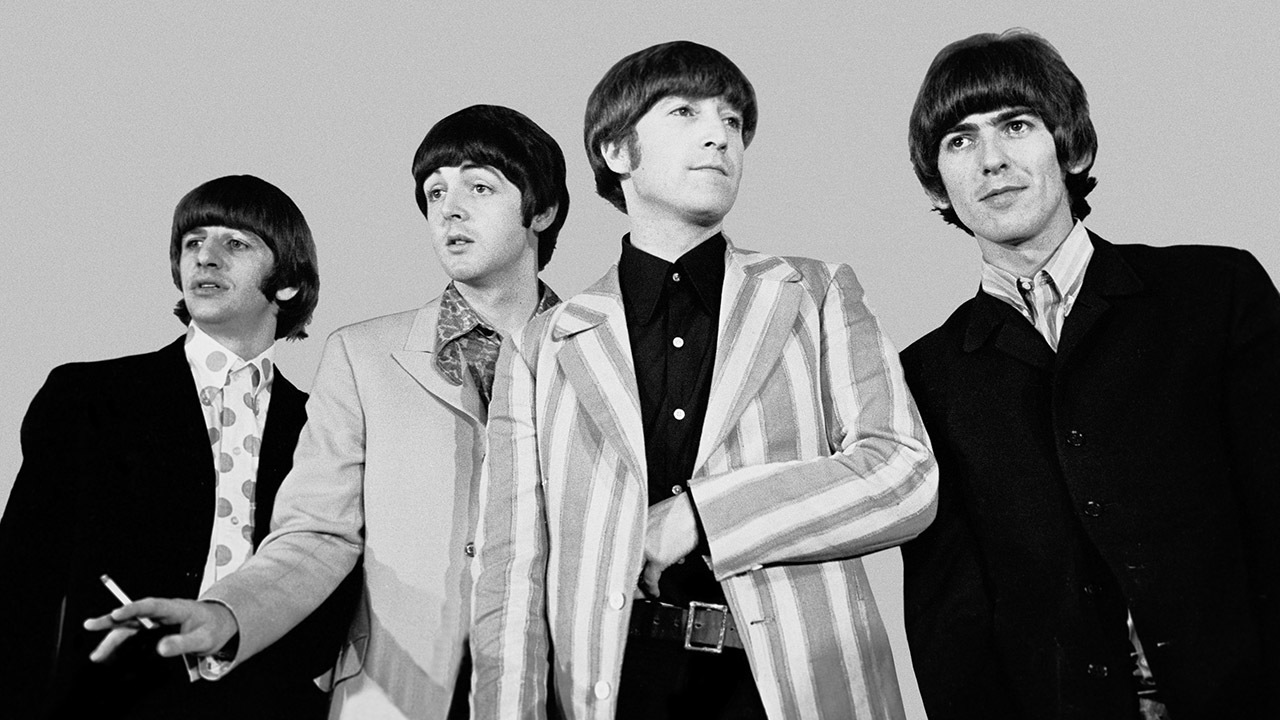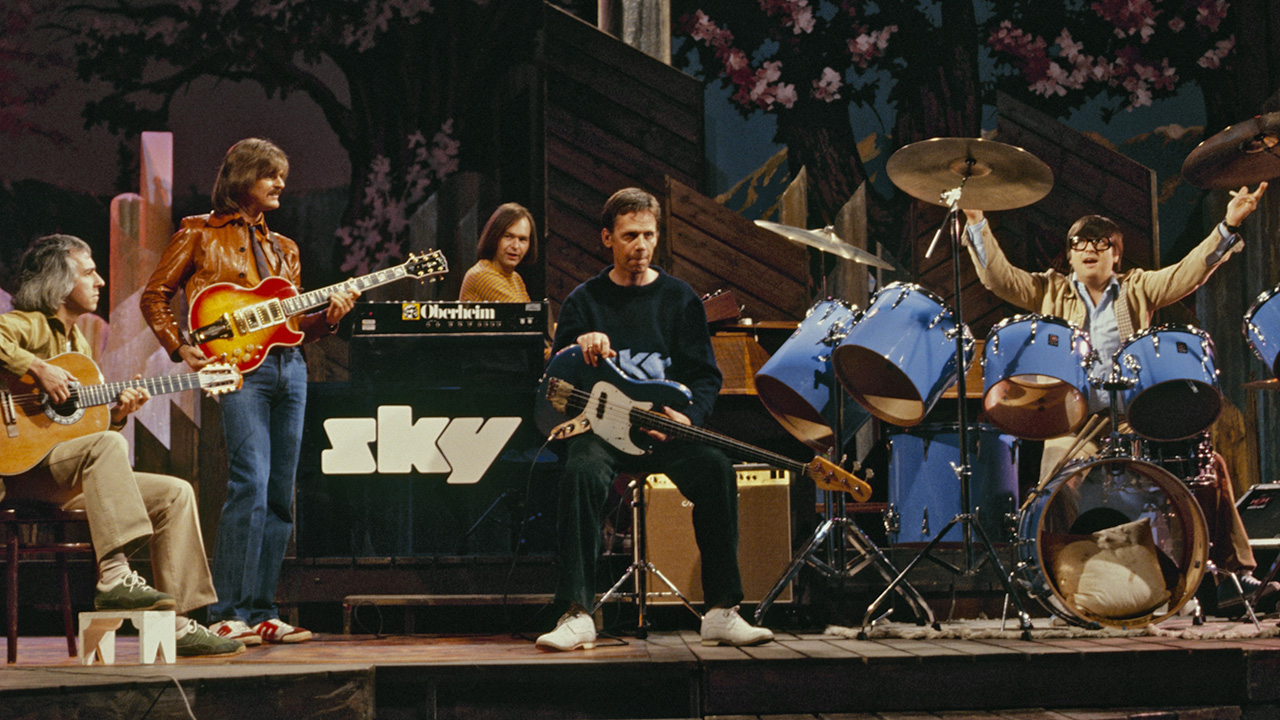66 from '66 – A-B
The 66 records that built rock as we know it – all from 1966. Starting with The Beatles...

Our 66 from ‘66, A-B.
The Beatles
Paperback Writer
Parlophone single, June 10, 1966
Revolver
Parlophone, August 5, 1966
In 1965, The Beatles took their instruments into the studio and recorded songs the same way they’d play them
on stage.
But in 1966 the studio became the instrument. And the other instruments became anything but themselves, and subject to the Fab Four’s fanciful, lysergically enhanced imaginations. It was the difference between cinema-verité and Cinerama, and it was the Big Bang for rock record making.
Sign up below to get the latest from Classic Rock, plus exclusive special offers, direct to your inbox!
Rain, the B-side of the single that dispatched their Mop-Top past, was a thrilling introduction to this sonic adventure. The rhythm track was recorded at a faster tempo, then slowed down, which altered the character and textures of the instruments. The electric guitars pulsated with a sawtoothed buzz. McCartney’s bass, boosted by using a loudspeaker as a microphone, bounded out of the mix (the Paperback Writer/Rain single heralded Macca as rock’s tastiest bassman). And John Lennon’s voice, sped up, double-tracked and flipped, resounded like a psychedelic siren. All of this brilliance flowed right into Revolver. Melody Maker said: “The Beatles have definitely broken the bounds of what we used to call pop.” And engineer Geoff Emerick declared: “From the day Revolver came out, it changed the way everyone else made records.”
Blues Breakers
The Beano album
Decca, July 22, 1966
BB King, Chuck Berry, Otis Rush… They all made their six strings cry and wail. But no fan ever felt moved to spray paint
“…Is God” after those guitarists’ names on an underground station wall. On the so-called Beano Album, John Mayall’s Blues Breakers’ hotshot disciple Eric Clapton combined scholarly dedication to the blues with a 21-year old’s arrogance and attitude, and invented rock music’s key protagonist: the guitar hero. Solos had never stepped out so far or so loudly. To that end, the tools Clapton used were crucial. The Gibson Les Paul through the Marshall amp became everyone’s gold-standard combo.Clapton would play it brilliantly – and safely – over the next 50 years, but never again with such deity-like power.
Blues Magoos
Psychedelic Lollipop
Fontana, November 1966
Early garage-rock heroes from The Bronx, Blues Magoos helped push the word ‘psychedelic’ into the public consciousness with the title of their first album. The collection gazed into the recent past (their cranked-up cover of John D Loudermilk’s Tobacco Road), but had evidently ingested the funny pills, offering a futuristic, Byrds-ian angle on One By One (written by frontman ‘Peppy’ Theilhelm and bassist Ron Gilbert when they were 16 years old) and the proto-punk rock classic and US Top 5 hit (We Ain’t Got) Nothin’ Yet.
In a competitive era, Blues Magoos stood out by dint of their sonic experimentation and their use of trippy giant lava lamps on stage.
Tim Buckley
Tim Buckley
Elektra, October 1966
Tim Buckley was only 19 when he recorded his debut album with many of the era’s finest talents. Elektra already knew they had someone special. At LA’s Sunset Sound were The Doors’ team of producer Paul Rothschild and engineer Bruce Botnick, Mothers Of Invention’s drummer Billy Mundi, Brian Wilson collaborator Van Dyke Parks on keyboard overdubs, while the string arrangements were done by Phil Spector’s sidekick Jack Nitzsche, who’d played piano and percussion on the Rolling Stones’ Aftermath.
Buckley, the troubadour with the tremulous five-octave range, uses folk rock as the launch pad for his flights of fancy. Wings has the ornate grace of Buffalo Springfield’s Nitzsche-gilded Expecting To Fly, and It Happens Every Time is a baroque pop beauty. Buckley is still operating within conventional parameters here, but there are signs – on Song Of The Magician and Song Slowly Song – of the artist who would soon slip his moorings for outer-limits forays such as Lorca and Starsailor.
Buffalo Springfield
Buffalo Springfield
Atco, December 1966
Buffalo Springfield’s 60s debut helped shape so much that happened in the 70s. Ostensibly billed as a folk-rock band, the quintet freely sprinkled their best songs (Go And Say Goodbye, Nowadays Clancy Can’t Even Sing, Hot Dusty Roads) with elements of country, blues and psychedelia, giving rise to a more nebulous, less segregated strain of American music.
Rhythm guitarist Richie Furay would go on to form popular country rockers Poco, while both Stephen Stills and Neil Young became 70s superstars with CSNY and beyond. None of this would have been possible, however, without the existence of this groundbreaking record.
The Butterfield Blues Band
East-West
Elektra, August 1966
They came from a hardcore blues background, but harmonica-toting Paul Butterfield and his Blues Band were Elektra’s first acid-rock act. Their second album was where Howlin’ Wolf and Muddy Waters met free-form jazz, with guitarists Mike Bloomfield and Elvin Bishop providing the musical chops to back it up. Eclectic in the extreme, they covered Muddy’s Two Trains Running and gave Allen Toussaint’s Get Out Of My Life Woman a psychedelic edge. Elsewhere, their introduction to LSD in 1965 steered them towards improvised ragas that turned the 13-minute title track into a modal drone that lasted an hour on stage. This experimental approach would soon become the norm as Love and The Doors took BBB’s cue, stepping away from three-minute pop and embracing the long-song format.
